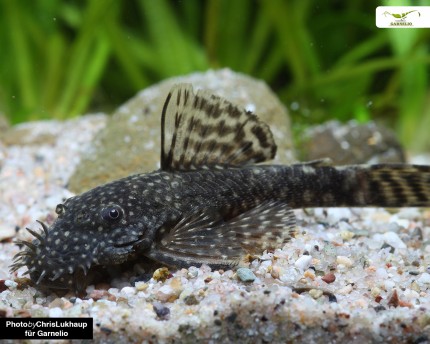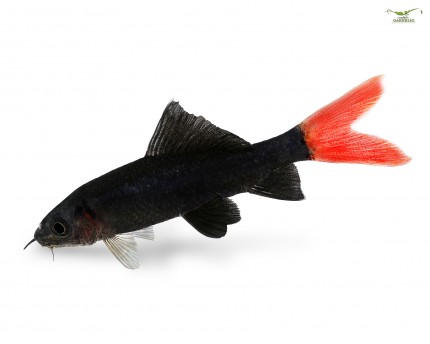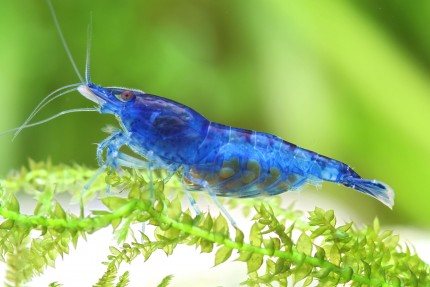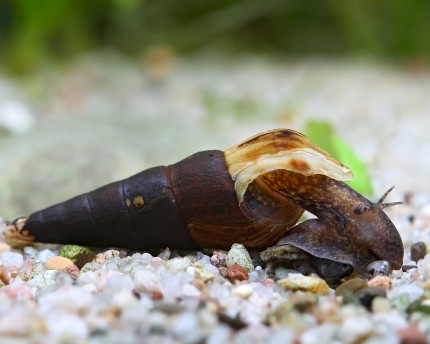incl. VAT plus shipping costs
Immediate delivery, express possible ![]()
More than 20 Articles in stock
Delivery only innh. Germany and Austria possible.
Switch to the German store
- Item no: 6667
Fast delivery times
All products are in stock with us!14 years of breeding experience
Let our team of experts advise you!High customer satisfaction
from over 3,000 reviews "| Origin: | South America |
| Final size: | 8-12 cm |
| Difficulty: | 1 - Simple |
| with shrimps?: | with dwarf shrimps, offspring is eaten |
| with dwarf crabs?: | Yes |
| with snails/shells?: | Yes |
| Planting possible?: | Yes |
| Visual effect: | Especially colorful |
| Diet: | omnivorous - omnivorous |
| Fish group: | Tooth carp |
| Water values: | Hard water |
| Pelvic region: | Top |
| Breeding: | simply |
| Aquarium size: | 100 l (approx. 80cm) |
| Temperature: | 18-28 °C |
The pineapple swordtail Xiphophorus helleri belongs to the live-bearing toothcarps and is closely related to guppies and platies. Swordtails can also interbreed with platies. Xiphophorus helleri originates from Central America and South America, where it lives in fast flowing rivers with many plants.
The special feature of the up to about 12 cm long males is the spectacular sword on the caudal fin. It is about 4 cm long in adult males. The color pineapple in the swordtail is shown by an orange to red color on the back and a bright yellowish coloration on the ventral side. The sword in males is fringed with dark stripes, the caudal fin of females may also be black in color, but orange or yellowish is also possible. Females do not have a sword and also grow quite large at about 12 cm. In addition to sword-bearing males, there are also the so-called late males, which look like females for a very long time and retain the body shape of a very strong female even after the formation of the male gonopodium (the elongated sexual organ), but are capable of procreation.
The swordtail is a live-bearing toothcarp and gives birth to live fry. Females can store semen for a long time and for several litters. A litter can be up to 150 animals strong. Adults chase after their offspring, thereby decimating the offspring population. The fry are 6-9 millimeters long at birth, they come
Swordtails have a relatively well-developed schooling behavior. They also live in biotopes in nature in medium-hard to hard water and even in light brackish water. A water temperature of 20-28 °C is optimal for Xiphophorus helleri, so they can be kept at a normal room temperature without a heater.
The socialization of swordtails works quite well especially with larger shrimps like Amano shrimps or fan shrimps and with smaller peaceful dwarf crayfish species from the genus Cambarellus. Smaller shrimp and even their young may be eaten, while larger crayfish see the fish as a welcome addition to their diet. Swordtails are most likely to be kept with Neocaridina , a shrimp species known for its good reproduction rate.
In the wild, small crustaceans are part of the swordtails' diet, along with worms and insects and aquatic plants. Pineapple swordtails also like to nibble on algae and eat algae coverings, as well as soft vegetables (tomatoes, zucchini, squash, scalded spinach leaves, dandelion or nettle leaves, to name a few). Flake food for aquarium fish is also readily taken, as is frozen food or live food such as grindal, water fleas or mosquito larvae.
Our food recommendation: The fragrant NatureHolic Guppyfeed was tailor-made for the needs of guppies and other viviparous fish in the aquarium. In addition to high-quality animal ingredients, it also contains vegetable components that benefit guppies & co. The soft granules protect the sensitive mouth of the viviparous from injuries caused by hard food grains and provide the fish with a natural feeding experience.
Our plant recommendation: For planting, use NatureHolic InVitros. These are free of snails, planarians and other unwanted co-inhabitants. Also free of algae spores, bacteria and fungi.
Expert Tip: We recommend for fish keeping the NatureHolic 3 Phase Liquid. The care set offers the best all-round protection for your animals. It ensures optimal conditions for successful breeding and keeping.
| Scientific name | Xiphophorus helleri |
| German Name: | Pineapple swordtail |
| Difficulty level: | for beginners |
| Origin/Distribution: | South America |
| Coloration: | Orange to red on the back and light yellowish on the ventral side, sword fringed by dark stripes in males, caudal fin of females black or orange to yellowish |
| Age expectancy | approx. 3 years |
| Water parameters: | GH 12 to 30, KH 5-20, pH 7 to 8.5, temperature 20 to 28 °C |
| Tank size: | from 80 l |
| Food | Omnivorous, likes to take frozen or live food and soft vegetables or greens, in addition to flake food and granulated food |
| Breeding | very easy |
| Behavior | very peaceful |
| Group size | at least 10 |
| Further information | Ten typical aquarium fish for beginners and alternatives to them, Tips for acclimating fish to the aquarium, Feeding aquarium fish properly - cheap food and what it can do |
- Item no: 6667
- EAN No.: 7426796200364
Entdecke die Garnelio Welt!
Garnelio gehört zu den größten Onlineshops für wirbellose Aquarientiere weltweit.
Viele Artikel gibt es exklusiv nur bei uns im Shop.












































The fields marked with * are required.
I have taken note of the privacy policy.
Top...
Top